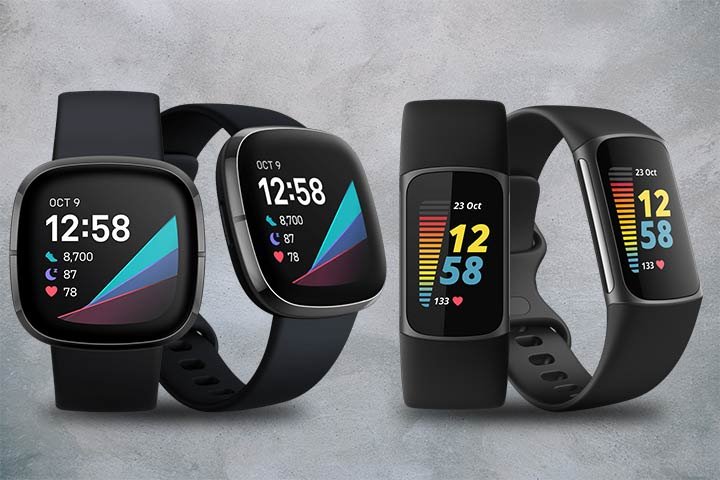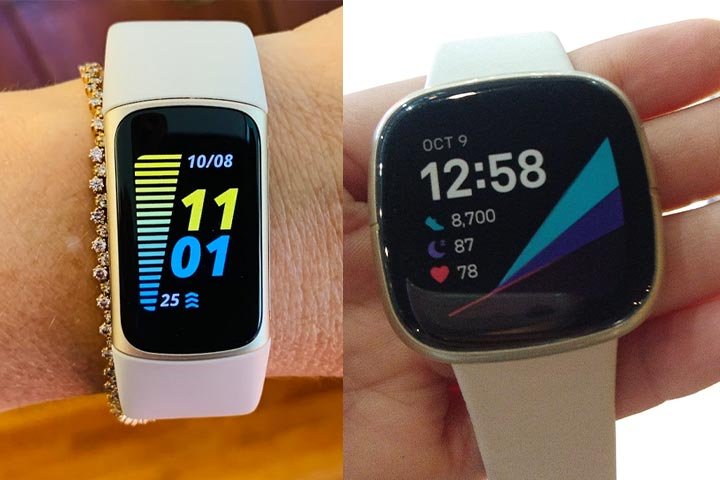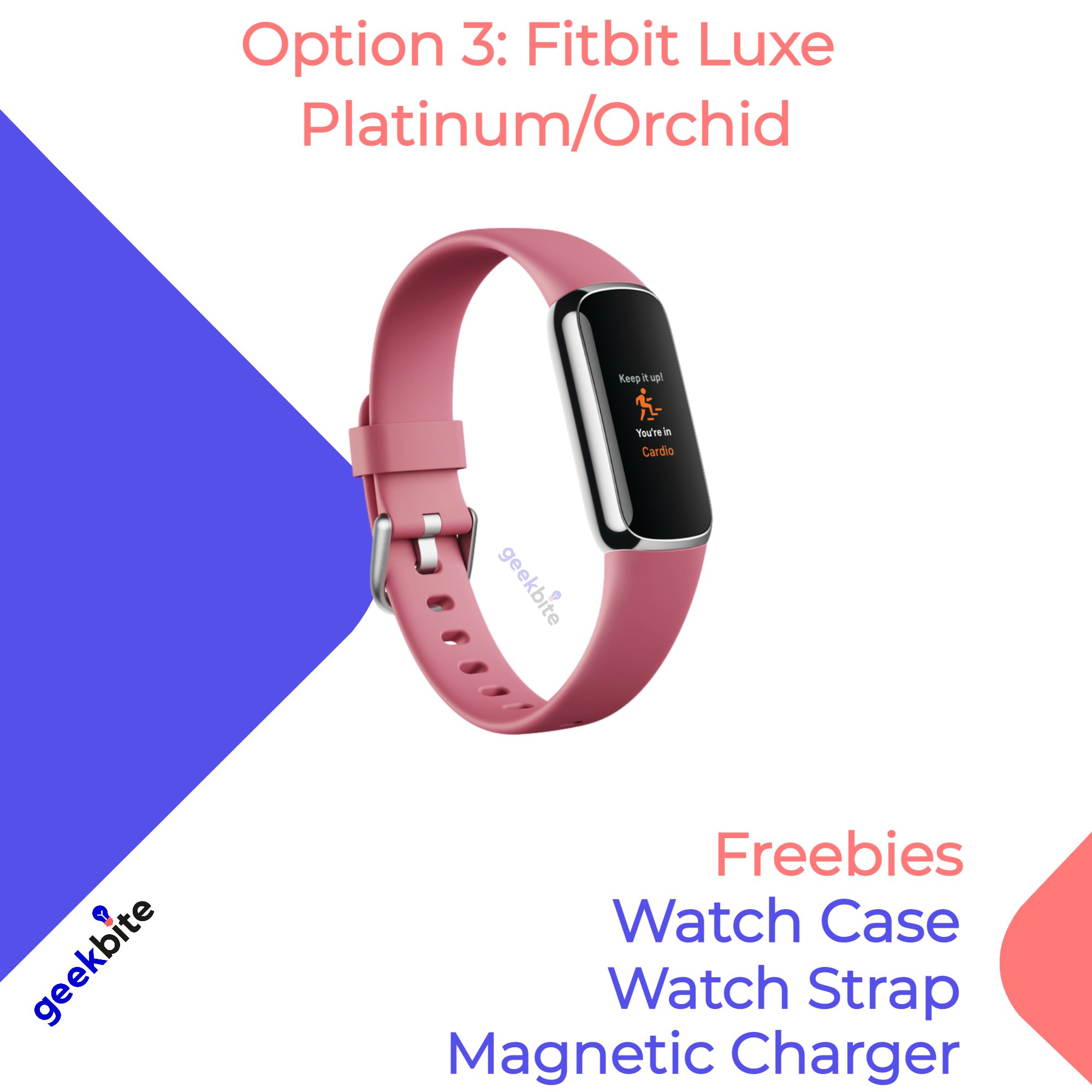The Google Paradox: A Review of Fitbit’s Charge 5, Sense 2 & Versa 4

When Google acquired Fitbit, the tech world held its breath. Would we see the ultimate fusion of best-in-class health tracking and a world-class smart OS? The answer, embodied by the Fitbit Charge 5, Sense 2, and Versa 4, is far more complicated. This generation represents a crossroads for the wearable pioneer, streamlining its aesthetic while controversially simplifying its intelligence. What remains is a lineup of beautiful, hyper-focused health devices that feel less like smartwatches and more like a statement on what Google believes a Fitbit should be.
A Unifying, Elegant Design
Across the board, this hardware is a triumph of industrial design. Gone are the sharper edges of previous models, replaced by a softer, more organic pebble-like form that feels fantastic on the wrist. The Charge 5 is the pinnacle of this philosophy—a sleek, unobtrusive band packed with a stunningly bright AMOLED color screen that punches far above its weight.

The Sense 2 and Versa 4 share a near-identical squircle chassis, crafted from lightweight aluminum and noticeably thinner than their predecessors. The most celebrated design change is the return of a physical button. After the frustratingly finicky capacitive “button” on the original Sense, this tactile, clickable input is a welcome and necessary course correction. All three devices are exceptionally comfortable for 24/7 wear, which is crucial for their primary function: continuous health monitoring.

Performance and a Stripped-Down Experience
Herein lies the controversy. While Fitbit’s core tracking of steps, sleep stages, and heart rate remains top-tier, the “smart” experience on the Sense 2 and Versa 4 is a significant step backward. Google has replaced the old Fitbit OS with a new, simplified interface that mimics the tiles and basic navigation of its own Wear OS. It’s fluid enough for daily use, but the underlying software has been hollowed out.
Third-party app support is gone. There is no Spotify for offline playlists, no Starbucks app, no third-party watch faces beyond Fitbit’s own gallery. Wi-Fi has also been removed, meaning all syncing and updates are handled over a slower Bluetooth connection. While Google has added its Wallet and Maps (for turn-by-turn directions tethered to your phone), these additions feel more like a consolation prize than a meaningful upgrade. The Charge 5, by virtue of being a tracker first, sidesteps much of this criticism; its simple, responsive interface does exactly what it needs to without the pretense of being a full-fledged smartwatch.

The Health Tracking Powerhouse
If you can look past the smartwatch omissions, the health-sensing capabilities are formidable. The Charge 5 and Sense 2 share an electrodermal activity (cEDA) sensor for all-day stress tracking and an ECG app to monitor for signs of atrial fibrillation. These are genuinely powerful health tools that provide actionable data. Sleep tracking remains a Fitbit hallmark, delivering detailed breakdowns of your sleep stages and a Sleep Score that is both consistent and insightful.
However, the value proposition is complicated by the Fitbit Premium subscription. While you get raw data for free, the most useful insights—like the excellent Daily Readiness Score that tells you whether to push hard or recover—are locked behind a monthly paywall. For a device that can cost hundreds of dollars, gating its most intelligent features feels like a tough pill to swallow and must be factored into the total cost of ownership.
Final Verdict
This generation of Fitbit devices presents a clear, if divisive, choice. The Fitbit Charge 5 is arguably the best product of the three, a stellar fitness tracker that blends a premium design with advanced health sensors in a compact form. It knows what it is and executes it flawlessly.
The Sense 2 and Versa 4 are for a much more specific user: the Fitbit loyalist who prioritizes multi-day battery life and world-class health and sleep tracking above all else. They are beautiful, comfortable health monitors with just enough smarts—like notifications and Google Wallet—to get by. However, if you’re looking for a true smartwatch with app ecosystems, music storage, and robust third-party integrations, you must look elsewhere. These are no longer competitors to the Apple Watch or Samsung Galaxy Watch; they are premium, Google-flavored alternatives to them.
Where to Buy:
Fitbit Charge 5/Sense 2/Versa 4 Quick Summary
Key Scores:
- Value: 95%
- Design: 90%
- Performance: 91%
- Quality: 90%
- Popularity: 90%
Top Pros
- ✅ Design is comfortable, lightweight, and modern across all models.
- ✅ Core health and sleep tracking capabilities remain exceptionally strong.
- ✅ Battery life easily surpasses most competitors in the smartwatch space.
- …
Key Cons
- ❌ Smartwatch features were significantly reduced from previous Fitbit models.
- ❌ Many advanced health insights are locked behind a paid subscription.
- ❌ Third-party app support and music storage have been entirely removed.















